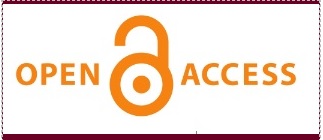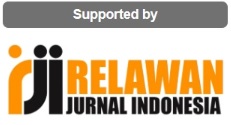Peer-Reviewers
Peer-Reviewers
The "Jendela Pengetahuan" journal relies on the expertise of a diverse group of peer reviewers who are critical to maintaining the quality and integrity of our research. Our reviewers are selected based on their expertise, experience, and contributions to their respective fields. Below are the key responsibilities and expectations for peer reviewers:
- Role of Peer-Reviewers
- Peer reviewers play a crucial role in the academic publishing process by providing objective evaluations of submitted manuscripts.
- Reviewers assess the research's quality, relevance, originality, and scientific rigour, offering both authors and editors constructive feedback.
- Selection Criteria
- Reviewers are selected based on their expertise in the subject area of the manuscript, previous publications, and familiarity with the latest research in their field.
- The journal strives to ensure diversity in its pool of reviewers, drawing from academia and industry to provide comprehensive assessments.
- Confidentiality
- Reviewers must treat all manuscripts as confidential documents. Manuscripts should not be shared or discussed with others except as authorized by the editor.
- The identities of the reviewers and authors are kept confidential throughout the review process to maintain objectivity (double-blind review).
- Review Process
- Reviewers are expected to provide thorough, constructive, and timely reviews, typically within 2-4 weeks of receiving a manuscript.
- Reviewers should evaluate the manuscript based on its originality, methodology, significance, clarity, and contribution to the field.
- Specific feedback on strengths, weaknesses, and areas for improvement should be provided, along with a recommendation for acceptance, revision, or rejection.
- Conflict of Interest
- Reviewers must disclose potential conflicts of interest that could influence their manuscript evaluation. If a conflict of interest exists, the reviewer should decline the invitation to review the manuscript.
- Common conflicts of interest include personal relationships with the authors, financial interests, or concurrent competitive research.
- Ethical Guidelines
- Reviewers are expected to adhere to the highest ethical standards in their reviews. They should avoid making personal or biased comments and focus on providing constructive and fair evaluations.
- Reviewers should notify the editor if they suspect any form of ethical misconduct, such as plagiarism, data fabrication, or authorship issues.
- Recognition of Reviewers
- The "Jendela Pengetahuan" journal acknowledges the valuable contributions of its reviewers. Upon request, the journal may provide official letters of acknowledgement or certificates of review participation.
- Exceptional reviewers may be invited to join the journal's editorial board or participate in other editorial activities.
- Becoming a Peer-Reviewer
- Researchers and professionals interested in becoming peer reviewers for the "Jendela Pengetahuan" journal can express their interest by contacting the editorial office at [lasaiba.dr2@gmail.com] or registering on the journal's submission platform.
- Potential reviewers should provide a brief CV or summary of their expertise and areas of interest to assist the editorial team in matching manuscripts with the most suitable reviewers.















